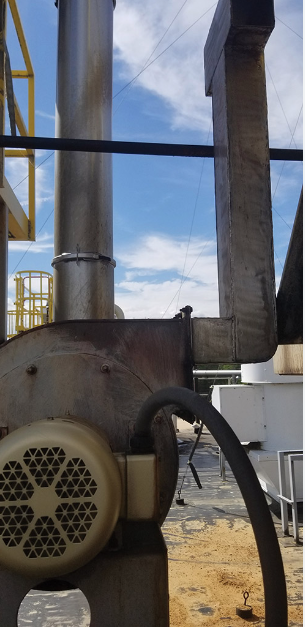 In the field, our team is often called upon to address mysterious issues that arise in industrial fan applications. Variations in airflow distribution, changes in static pressure, and alterations in energy consumption can occur, along with a significant decrease in overall efficiency, functionality, and safety of the fan. In many cases, these allusive issues are due to a phenomenon called system effect. The consequences of system effect can include poor fan operation, decreased productivity, and even potential hazards. Understanding and accounting for the system effect in fan applications is of crucial importance to ensure optimal performance, energy efficiency, and the safe operation of industrial fans.
In the field, our team is often called upon to address mysterious issues that arise in industrial fan applications. Variations in airflow distribution, changes in static pressure, and alterations in energy consumption can occur, along with a significant decrease in overall efficiency, functionality, and safety of the fan. In many cases, these allusive issues are due to a phenomenon called system effect. The consequences of system effect can include poor fan operation, decreased productivity, and even potential hazards. Understanding and accounting for the system effect in fan applications is of crucial importance to ensure optimal performance, energy efficiency, and the safe operation of industrial fans.
How System Effect Impacts Fan Performance
System effect is the term used to describe interplay between a fan and the system within which it operates. An article titled, Mitigating System Effect to Optimize Fan Performance and Efficiency, published by the Air Movement and Control Association International (AMCA), examines the phenomenon of fan system effect and its impact on the performance of industrial and commercial air movement fans.
Fans are typically tested in laboratories under ideal conditions to achieve maximum performance, but real-world conditions often vary, leading to differences in actual fan performance. System effect is the term used to describe the cause of these disparities.It refers to losses in air-system performance due to adverse flow conditions, such as excess turbulence or swirl, near a fan’s inlet or outlet. It can happen when changes are made to the system design during fan installation, including modifications to ductwork length, width, and transitions.
Overcoming system effect factors to achieve the desired airflow volume often involve increasing fan speed, which results in higher energy consumption, increased costs, stress on components, and potential motor performance issues.
System Effect and Industrial Fan Selection
It is extremely important to take fan system effect into consideration during the fan-selection process. System-associated losses, including system effect, need to be accounted for to ensure accurate fan performance predictions post-installation. Failure to do so can lead to increased noise, vibration, and premature fan component failure, resulting in significant maintenance costs and downtime.
Lab Tests vs Real World
There are significant differences between laboratory testing conditions and real-world installations. In laboratories, fans are tested with uniform airflow and minimal turbulence, while actual installations involve complex factors influenced by existing infrastructure and space limitations.
In the real world, uneven airflow at a fan’s inlet, obstructions at the inlet or outlet, improperly configured ductwork, and losses caused by fan accessories can all contribute to system effect. Strategies for minimizing system effect include improving airflow uniformity by using turning vanes, optimizing inlet and outlet ducting, and accounting for the impact of accessories like inlet vane dampers.
Glacier Offers Expertise and Experience in Fan Selection
Designing systems with sufficient space for accessories and appropriate ducting can lead to long-term cost savings by reducing the impacts of fan system effect. Collaboration with a knowledgeable partner like Glacier Technology can go a long way toward achieving efficient and durable fan installations. Contact us to discuss your project!
